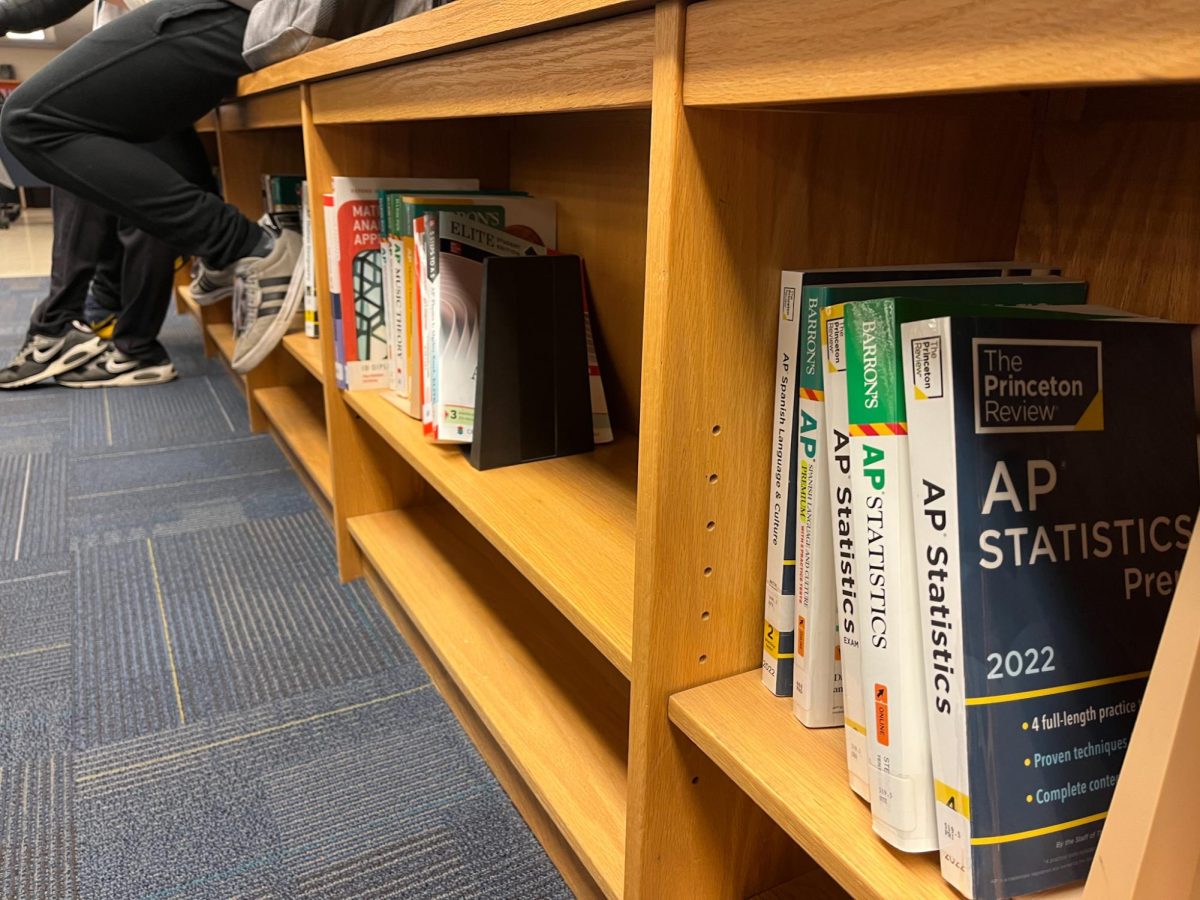The bell rings and students start heading to their desks. As instruction begins, a student in the next row appears a bit nauseous, and as the class period passes, her face begins changing colors and eventually she is gasping for breath. You seem to be the only one who notices.
This is a very real situation occurred September 2014 when Jane* walked into her Spanish class unaware that she would be gasping for air and unable to move just a few minutes into class.
“I informed the teacher that Jane needed to go to the health room, but she couldn’t walk because she was shaking so much,” said sophomore Robert. * “[The teacher] left the classroom and didn’t say anything to us, which was very unnerving. Apparently she was trying to find someone for help.”
Although students were aware of the situation, many were shocked and did not know what to do to help. In fact, some students recall this incident with fear and uncertainty.
“The student was sitting in the row next to me, only two seats away,” senior Marco Gutierrez said. “It was a very confusing and scary situation.”
Although cases like these do not happen every day, medical emergencies, such as seizures and fainting, do occur at CHS.
Dave* felt the onset of his fainting episode during his first period, and asked his teacher if he could go to the health room before it became worse.
“When I passed out, people told me that my teacher called the nurse, who then called the rescue team,” Dave* said. “The students had to leave the classroom and move into one class across the hall for the rest of the period. The rescue team put me on a stretcher and sent me to the hospital, but I wasn’t scared or shocked.”
In cases like these, students, staff and visitors need to be prepared to take action, as they would for fires and lockdowns.
To make sure students know how to take the safest precautions during emergencies such as these, the Observer has provided some help for those who have little experience dealing with an in-school emergency.
If someone is to have a medical emergency in a classroom or around the school, it is important to assess the person’s condition for the seriousness of the situation. If he or she is unresponsive, it is important to find help immediately. The red or black “call” button located in every classroom will directly contact the main office and the school nurse.
“When the button is pushed, the main office will respond as soon as possible, usually within seconds,” assistant principal John Taylor said. “The response is as quick as possible, but from experience, no matter how quick the response, it always feels like a long time with the adrenaline flowing and waiting with someone in distress.”
Once a staff member is in control of the situation, security and the school nurse will determine the next set of steps that need to be taken. More often than not, medical emergencies can be resolved in the nurse’s office.
“Security and the school nurse are trained to deal with medical emergencies,” Taylor said. “They determine whether to call 911 and more support if necessary.”
Fainting
Fainting, or a “fainting spell,” is caused from the lack of flow of oxygen to the brain and results in a loss of consciousness for a short period of time. Usually, fainting is not a huge cause for concern, but it can sometimes be a sign of a serious medical issue. Although the cause of fainting is generally unknown, there are many factors that may go into a “fainting spell.”
Fainting can be triggered by emotional factors, such as trauma or fear, or by health issues such as dehydration, low blood sugar, standing up too quickly or being in one place for a long period of time.
When someone faints due to a lack of oxygen to the brain, it is necessary to make sure blood flows to the head. Raise the feet above the heart, sit the person down for 10 to 15 minutes and loosen any tight articles of clothing, such as collars or belts.
Seizures
A seizure is often identified by violent shaking or loss of body control, and is caused by electrical activity change in the brain. Whether mild or severe, seizures must be approached with caution and immediate action.
Seizures are classified into two types. Partial seizures affect one side of the brain and body, and generalized seizures affect both sides. Episodes of these seizures can last anywhere from a few seconds to about 15 minutes.
Warning signs of these episodes include dizziness, changes in vision, anxiety or fear, and severe sickness in the stomach. After such warning signs, symptoms such as blackouts, confusion, uncontrollable muscle movement, falling and sudden mood changes may occur.
Symptoms can worsen and cause injury–or in extreme cases, a coma or even death. To prevent worsening, situate the person with his or her side on a head cushion, and wait for staff members or responders to arrive.
If a student faints or is unable to breathe, immediately call 911.
Vomiting
Although not as serious as fainting or seizures, vomiting is common. Vomiting is a symptom of numerous causes, including headaches, indigestion, food poisoning and infections.
However, serious vomiting can show signs that need emergency medical attention. If there is suspect of food poising, severe abdominal pain, or sever headache and stiff neck, then a doctor must be seen immediately in light that the symptoms could turn harmful.
Vomiting causes dehydration because the stomach, gets rid of food, but also a lot of fluids, so be on the look out for dry mouths, fatigue, and decreased urination. If dehydration does occur as a result of vomiting, drink clear fluids that contain electrolytes to help restore lost nutrients and don’t eat for six hours after the accident.
Allergies
Another common problem that plagues many CHS students is allergies.
An allergy is the immune system’s response to a foreign substance that is not typically harmful to your body. These substances elicit responses from your immune system that may cause itchy, watery eyes, a running nose, or a cough.
Usually, most students here at CHS have allergies that do not call for immediate medical attention, but serious allergies do roam the hallways. In those cases, students typically tend to carry epipens. Check out the Observer website for a video on how to use epipens.
Nose Bleeds
Nosebleeds can happen on a daily basis. Although they are rarely serious, they have a variety of causes, including sinus sicknesses and dryness. However, if the nosebleeds are frequent, it could indicate a serious problem.
In nosebleeds, a student should grab a tissue and put it to their nose, pinching the bridge. However, they should not tilt their head back, or else they could vomit.
According to the Mayo Clinic, when dealing with nosebleeds, you should lean forward, pinch your nose and wait the bleeding out for five to ten minutes.
*Students who wished to remain anonymous.







